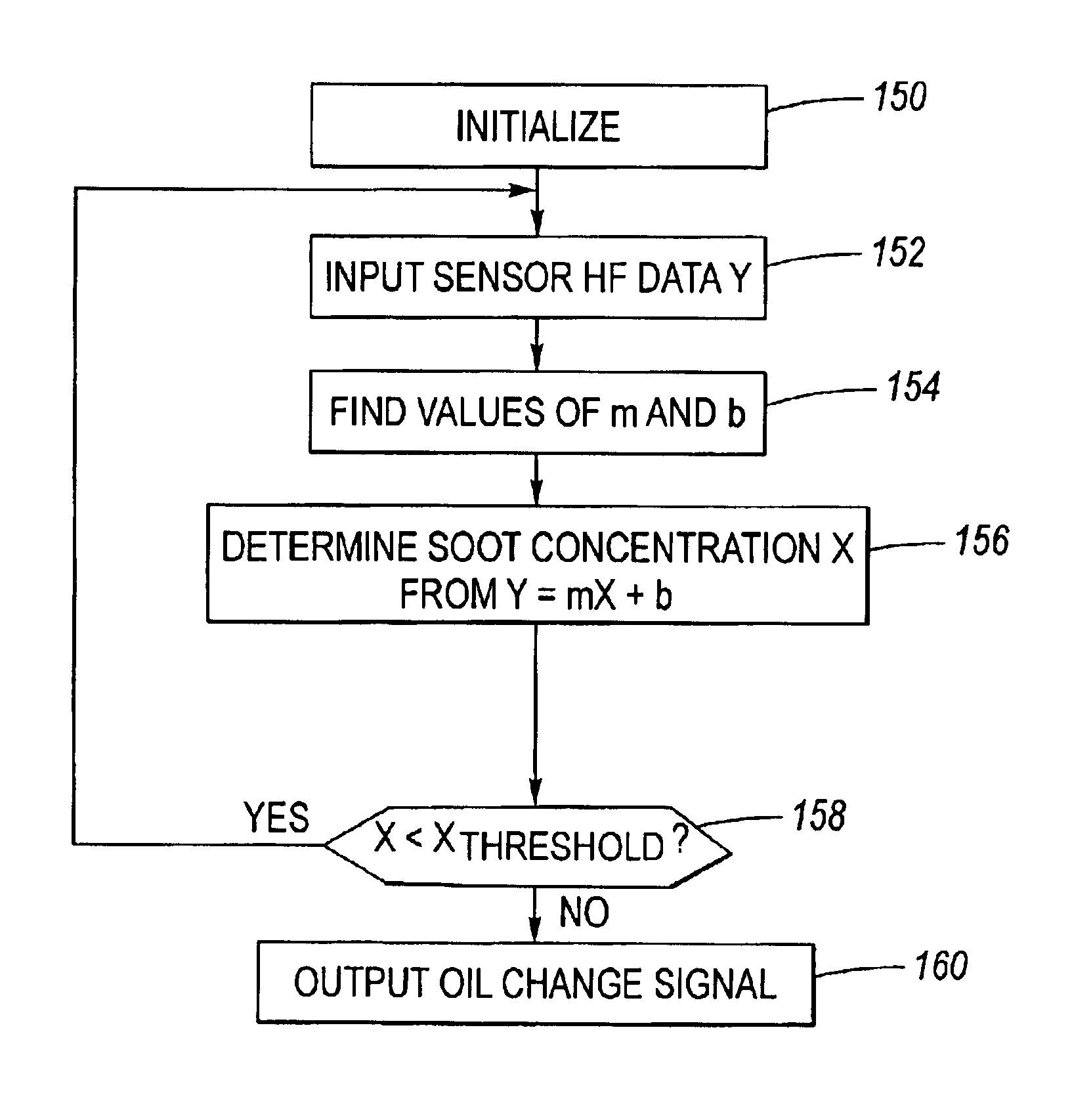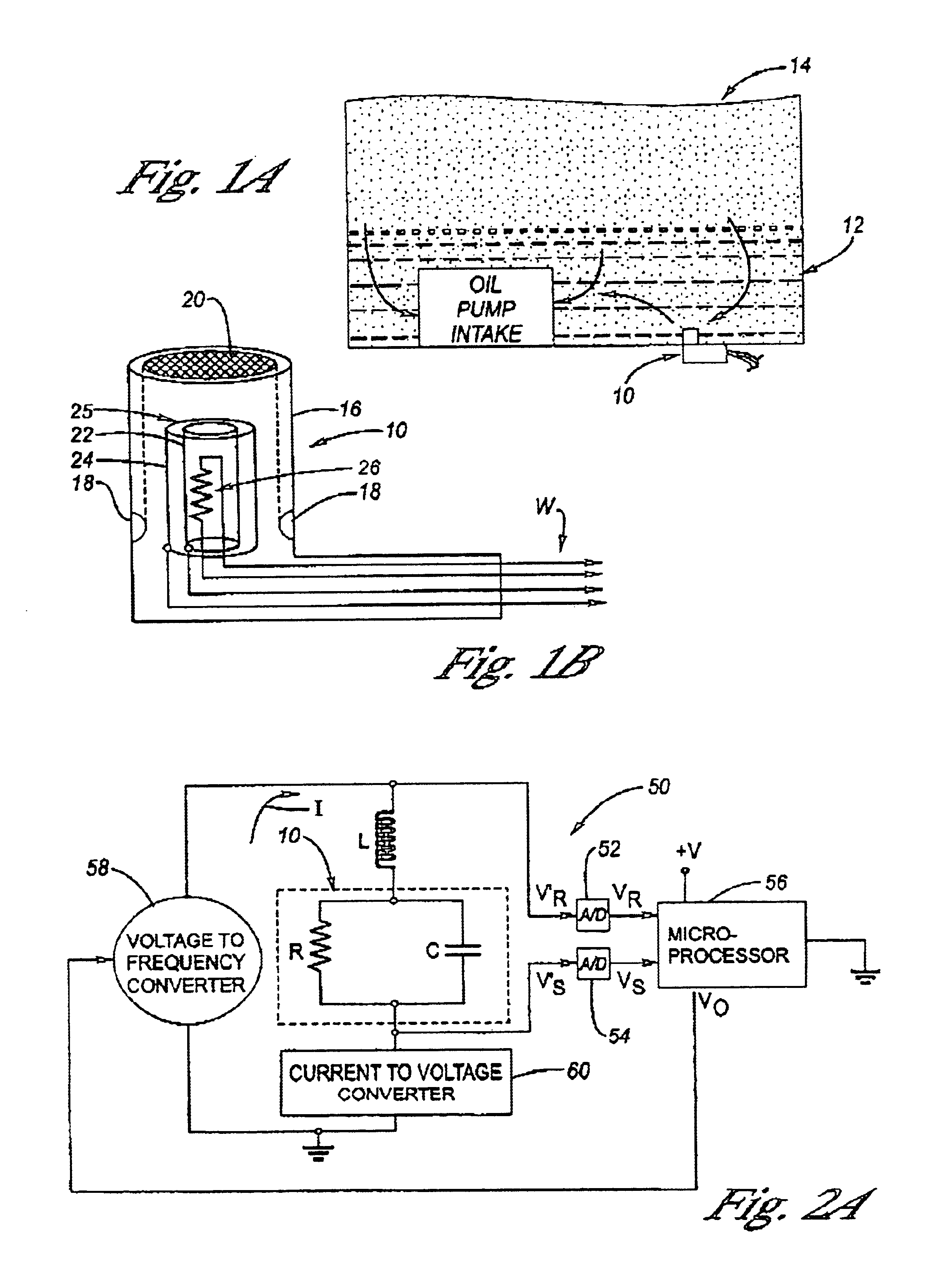Diesel engine lubricating oil contaminant sensor method
a technology of lubricating oil and sensor method, which is applied in the direction of machines/engines, pulse techniques, instruments, etc., can solve the problem that the change in the dielectric constant of oil (permittivity) is a relatively unreliable predictor of oil quality
- Summary
- Abstract
- Description
- Claims
- Application Information
AI Technical Summary
Benefits of technology
Problems solved by technology
Method used
Image
Examples
Embodiment Construction
[0044]Referring now to the Drawing, FIGS. 1A through 2C and 27 and 28 depict an example of apparatus to carryout the Diesel engine oil contaminant sensor method according to the present invention; and FIGS. 3 through 26 depict various graphical plots which support carrying out the various steps of the Diesel engine oil contaminant sensor method according to the present invention.
[0045]FIG. 1A depicts an environment of placement and operation of an oil sensor 10 at the bottom of an oil pan 12 of a Diesel engine 14. As shown at FIG. 1B, the oil sensor 10 has a cylindrical shell 16 having apertures 18 and an open top end 20. Inside the shell 16 is a pair of concentrically arranged and mutually separated cylindrical capacitor plates 22, 24 which collectively form a capacitor 25, each of which being connected to a respective portion of wiring, W. Depending on the method used according to the present invention, a thermometric sensor 26, as for example a thermistor, is placed within the sh...
PUM
 Login to View More
Login to View More Abstract
Description
Claims
Application Information
 Login to View More
Login to View More - R&D Engineer
- R&D Manager
- IP Professional
- Industry Leading Data Capabilities
- Powerful AI technology
- Patent DNA Extraction
Browse by: Latest US Patents, China's latest patents, Technical Efficacy Thesaurus, Application Domain, Technology Topic, Popular Technical Reports.
© 2024 PatSnap. All rights reserved.Legal|Privacy policy|Modern Slavery Act Transparency Statement|Sitemap|About US| Contact US: help@patsnap.com










